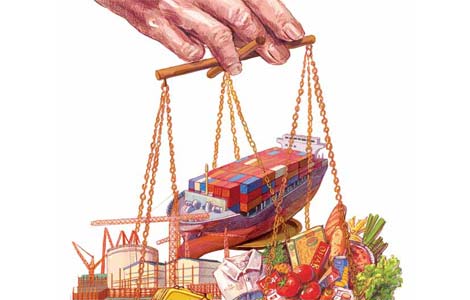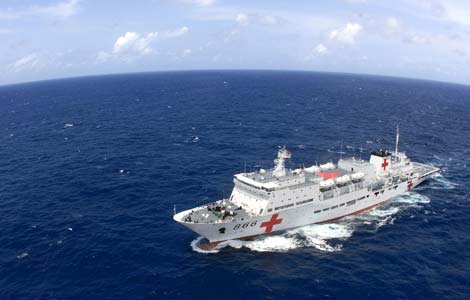What is Thalassemia?
Updated: 2013-05-09 09:32
By Li Yang (China Daily)
|
||||||||
Thalassemia is a genetic blood disease originating in Italy and prevalent in Southern Europe, South Asia, the Middle East and Southeast Asia. About 4.83 percent of the world population carries the thalassemia gene.
If both parents carry the genes, there is a 25 percent chance their child will have severe thalassemia, a 50 percent chance it will carry the gene and a 25 percent chance it will be healthy. Thalassemia can cause significant complications, including pneumonia, iron overload, bone deformities and cardiovascular disease.
Most babies with severe thalassemia die before they reach age 10 if they do not receive regular blood transfusions and adequate iron chelation therapy.
Premarital checkups, pre-pregnancy checkups and prenatal diagnosis are necessary to prevent and control the disease.

 Michelle lays roses at site along Berlin Wall
Michelle lays roses at site along Berlin Wall
 Historic space lecture in Tiangong-1 commences
Historic space lecture in Tiangong-1 commences
 'Sopranos' Star James Gandolfini dead at 51
'Sopranos' Star James Gandolfini dead at 51
 UN: Number of refugees hits 18-year high
UN: Number of refugees hits 18-year high
 Slide: Jet exercises from aircraft carrier
Slide: Jet exercises from aircraft carrier
 Talks establish fishery hotline
Talks establish fishery hotline
 Foreign buyers eye Chinese drones
Foreign buyers eye Chinese drones
 UN chief hails China's peacekeepers
UN chief hails China's peacekeepers
Most Viewed
Editor's Picks

|

|

|

|

|

|
Today's Top News
Shenzhou X astronaut gives lecture today
US told to reassess duties on Chinese paper
Chinese seek greater share of satellite market
Russia rejects Obama's nuke cut proposal
US immigration bill sees Senate breakthrough
Brazilian cities revoke fare hikes
Moody's warns on China's local govt debt
Air quality in major cities drops in May
US Weekly

|

|







